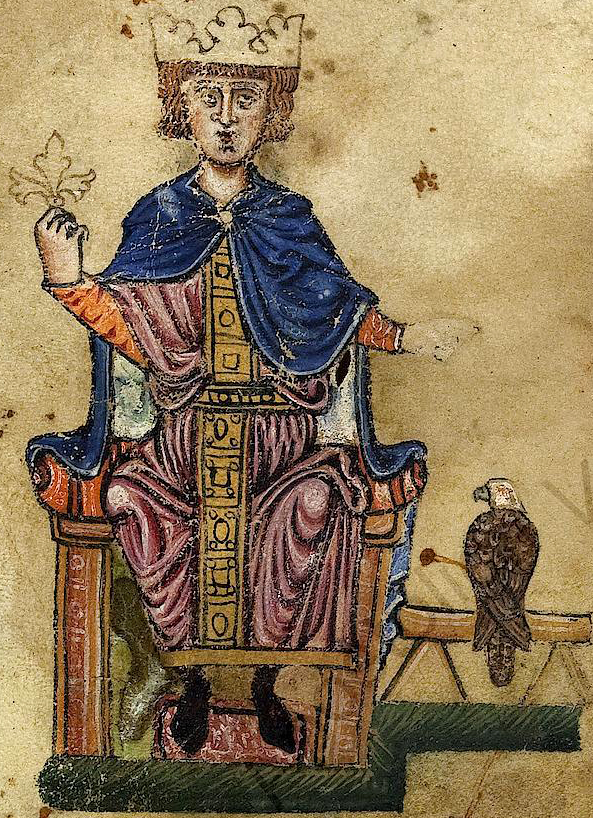
The return to Tradition in the West, which rather than “saving” Western civilization, is instead its overcoming, has nothing to do with primitivism. It is consistent with reason as well as the highest standards in the arts and sciences. It protects religious life from its enemies (though not necessarily the Church) and permits esoterism and the Hermetic sciences to be practiced in safety. Unlike the will to massification of the contemporary West, the Traditional view is differentiation: not only within a society, but it also seeks to preserve the distinctiveness of nations within the Empire. It encourages the chivalric code in all its aspects, including love and war.
Frederick II, the grandson of Roger II, was Holy Roman Emperor from 1220 until 1250. More than a great Emperor, he was fluent in six languages and a patron of arts and sciences. In particular, in the realm of art, we make mention of the Sicilian School of Poetry, that drew its inspiration from the troubadours of Provence, and transmitting that influence to Dante. As for science, Frederick supported practitioners of the Hermetic sciences.
Besides the promotion of learning and the legal duties required to run an empire, Frederick still managed to run a knightly court, steeped in the traditions of chivalry. Here follow some first-hand reports about the lavishness of court life in the castle of Foggia, one of his palaces.
Every sort of festive joy was there united. The alternation of choirs, the purple garments of the musicians evoked a festal mood. A number of guests were knighted, others adorned with signs of special honour. The whole day was spent in merriment, and as the darkness fell, flaming torches were kindled here and there and turned into day for the contests of players.
Another report concerns the visit of the English prince Richard, Earl of Cornwall.
The English noble was returning home from the crusade in summer heat: they first with baths and blood-lettings and strengthening draughts made him forget the toils and hardships of the journey and the war, and then entertained him with every type of sport. He listened in amazement to strange airs on strange instruments, saw the jugglers display their skill, was ravished by the sight of lovely Saracen maidens, who to the rhythm of cymbals and castanets came dancing in, balanced on great balls that rolled across the many-coloured polished floor.

Then there are the more fantastic accounts: hundreds of knights from all nations were entertained in silken tents, minstrels streamed in form every corner of the earth and foreign embassies displayed the rarest jewels. There are accounts of the Hermetists:
The messengers of Prester John brought an asbestos garment, an elixir of youth, a ring of invisibility, and, lastly, the philosopher’s stone. Further, people told how the Emperor’s court astrologer, Michael Scot, whose name was named with shuddering curiosity, on a hot day at a feast assembled thunderclouds at the Emperor;s command and performed other miracles.
from Frederick the Second by Ernst Kantorowicz.
This is fantastic! In otherwords, the stereo-type really is true – every B grade movie portrays the Middle Ages was this wonderful place of actual earthly human happiness (or at least the pursuit thereof), but they just didn’t know why, so it comes across as “cheesy”. Now we know why – separating Tradition from the “West” simply leads to a situation of inevitable massification, as some other form of “center” is found, which doesn’t exist. The rest, we know….I’ll bet Michael Scot had read the Picatrix material, although it’s interesting that Dante places him in the Inferno, rather than Paradise.